Canon and Nikon welcome a new friend in this month's commercial:
Other Canon vs Nikon videos can be watched on our YouTube Channel.
Canon and Nikon welcome a new friend in this month's commercial:
Other Canon vs Nikon videos can be watched on our YouTube Channel.
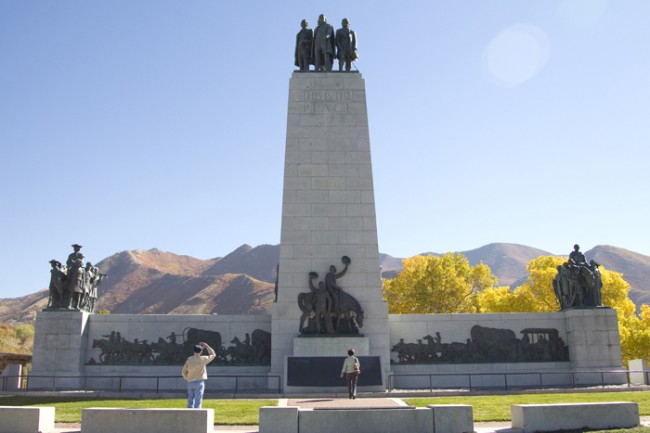
We are excited to announce the Partner’s Program for the 2011 UPAA Symposium. Once again Peggy Philbrick will lead the group through an exciting week of the best that Utah has to offer. The program will cost $200 per individual and will include entry fee’s and all lunches from Tuesday through Friday and all dinners from Monday through Thursday. Spouses of retired UPAA members will be able to attend the Partner’s Program for the special price of $50. You can register for the Partner's Program here.
If you or your children would like to join us only for certain activities and meals, please contact us at photo@byu.edu so that we can send you the information on how much each activity would cost.
Check out the full schedule on the Partner's Program Page.
Mark Philbrick was hired as the University Photographer at BYU in 1976, which incidentally was the same year that I was born. Now that little fact isn't relevant to this post, but I do love pointing it out.
When you have been around that long you get invited to speak to pretty much every group on campus. Recently he was asked to speak to the OPAC group on campus and he wanted to have a nice little video clip to break the ice and set the tone for the beginning of his talk. He wanted something fun, but different.
Thanks goodness we have Alison Fidel, who is our multimedia editor. She is actually a talented and experienced actress, as opposed to Kenny and Steve of Canon vs Nikon Fame. We asked her to create a bunch of funny outtakes during a fake sound check, but we left the specifics up to her while we kept rolling. Of course she killed it, check out the results below:

"Air Time" by Robert Jordan/University of Mississippi - "The campus received over 8" of snow over the holiday break, most students were still at home with family, but a few came to campus to sled on a big hill by Deaton Dorm."
The winning images from the December/January Monthly Image Competition are now posted on the UPAA home page. Congrats to the winners!
The HDDSLR revolution hits a speed-bump in our newest Canon vs Nikon video:
Other Canon vs Nikon videos can be watched on our YouTube Channel.
One of the biggest challenges we have on shoots is making sure that the client is happy with the finished product. Whether your client is a graphic designer, art director or the University President, it is important to ensure that their needs are met before you wrap a shoot. As photographers we sometimes forget that while we have the ability to look at a scene and envision how it will appear in two-dimensional poster, brochure or webpage, normal people do not have that knack. You need to find a way to show your clients the finished product without impeding your shoot.
In the film days we shot Polaroids to make sure that our exposure and composition were where they needed to be, then we handed the Polaroids to our client to make sure they approved of the setup before we ever loaded a roll of film. Here is a video of Mark Philbrick shooting a poster in what he likes to call “the good old days” and I affectionately call the 4th grade:
The Nikon D1 changed all that of course; with digital cameras we could just show the client photo on our lcd screen immediately after we shot it, you didn’t even have to shake the camera to make the image appear. The problem is, when you look at that small of a preview, you can’t see all the details that will inevitably jump out and destroy your image when it is put on the cover of the alumni magazine.
For a few years we would shoot test shots with our digital camera, then pull out the card, download the image to our laptop and let the designer poke around the raw file in Photoshop until they were satisfied that we could move on. While this system worked, it was slow and cumbersome.
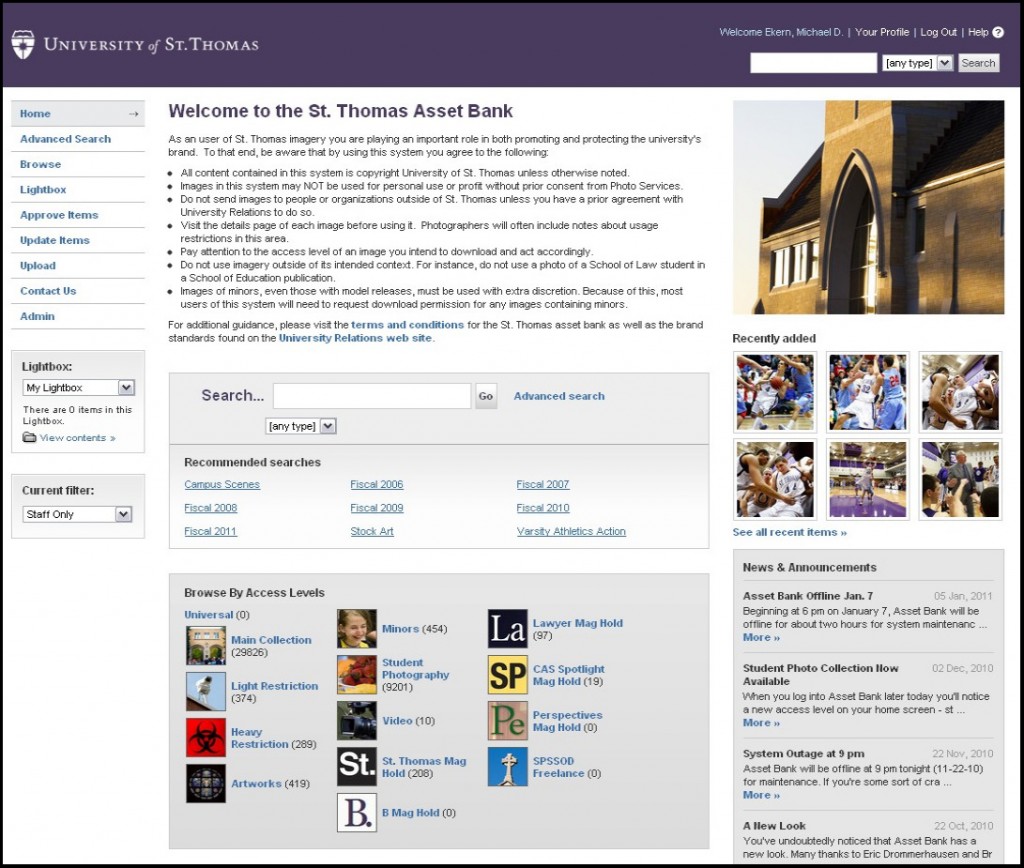
Digital Asset Management is a phrase that always seems to evoke the emotion of its acronym. Whether at a large university or a small community college, we are all challenged with the daunting task of organizing our large photo collections and sharing them with those who need access to them. Mike Ekern, of the University of St. Thomas, came up with the idea for a series of articles on the different DAM systems used by our membership. Hopefully this proves to be a useful resource to the UPAA membership who are struggling to create their own management system. Here is Mike's review of Asset Bank:
Home screen of the St. Thomas archive - click for detail
In March of 2010, two links caught my eye amid the flood of daily correspondence on the UPAA listserv. A note from Dani Machlis mentioned Asset Bank and Third Light as possible DAM solutions he was exploring for Ben-Gurion University of the Negev. I couldn’t help but look.

"Boathouse Sunrise" by Kevin Colton/Hobart and William Smith Colleges
The winning images from the November Monthly Image Competition are now posted on the UPAA home page. Congrats to the winners!
Well, we made it through the photographically challenging month of January. I think we all deserve another edition of Canon vs Nikon:
Other Canon vs Nikon videos can be watched on our YouTube Channel.
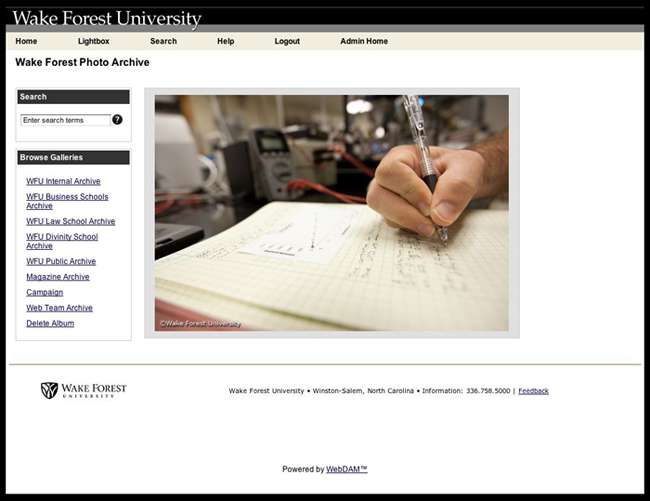
Digital Asset Management is a phrase that always seems to evoke the emotion of its acronym. Whether at a large university or a small community college, we are all challenged with the daunting task of organizing our large photo collections and sharing them with those who need access to them. Mike Ekern, of the University of St. Thomas, had the great idea to create an ongoing series of reviews of the Digital Asset Management systems that our members use. Hopefully this proves to be a useful resource to the UPAA membership who are struggling to create their own management system. To start things off, Ken Bennett reviews WebDAM:
A screen shot of the Wake Forest photo portal at http://wakeforest.spitfirephoto.com/
We made the transition to digital imaging in late 2000, after borrowing a digital camera from Canon to cover the Presidential Debate between Al Gore and George W. Bush. That experience led me to develop a workflow that incorporated a digital asset management system -- starting with a single-user copy of Canto Cumulus. Within a couple of years we installed the Cumulus Workgroup Client/Server application, providing client access to staff in Creative Services and the News Service.
Cumulus is an excellent solution, but it is challenging for a solo photographer to administer in a Unix environment. When I was directed to provide a web-accessible solution for catalogs to be shared by various end users, I started looking at other DAM applications.
I shot my first behind the scenes video two years ago. It was of our poster shoot with the Women's Softball Team that we shot as a test of the video features for my review of the Canon 5D MKii. While it is painful to look back at it now, (I really do know how to use a mic) it opened the door to a whole new way of finding clients. Few people ever saw the video, but it convinced me of the power of these new HDSLRs to shoot stunning video with shallow depth of field in almost no light. Since then, behind the scenes (or BTS) videos have been a key part of BYU Photo's marketing strategy here at the University.
It's a brand new year, how about a new camera:
Other Canon vs Nikon videos can be watched on our YouTube Channel.
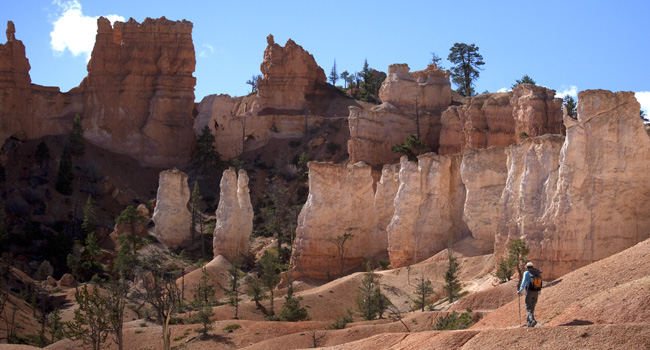
Bryce Canyon - Photo by Mark A. Philbrick/BYU
50 Years and Still Looking Good
BYU is excited to host the UPAA’s 50th Annual Technical Symposium. The UPAA has aided dedicated university photographers in the perfection of their craft for the past 50 years. Gone are the trusty old 4x5 Speed Graphics, replaced by zillion pixel chips. Gone are the Dektol stained fingers, only to be replaced by hand cramps from clicking on your mouse. Gone are the hours spent in a red light darkroom replaced by hours and hours staring at a computer screen. Gone are the good old days replaced by the great new days.
This year’s Symposium will remind us of the past while we gain great knowledge and inspiration to lead us into the future. We are planning an outstanding selection of informative and productive lectures, hands on instruction and face-to-face exchanges of experienced insight. We will feed your spirit with good food, great friends, and awe-inspiring landscapes.
And now for a special Christmas message from Canon and Nikon:
Other videos can be watched on our YouTube Channel.
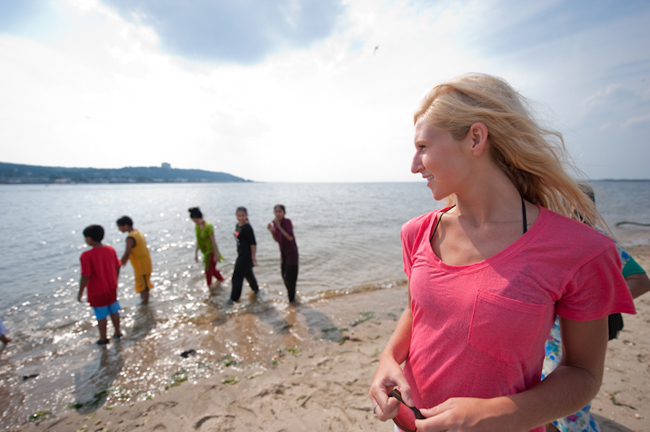
Michigan State University chemical engineering and materials science and environmental studies senior Gabrielle Kleber gained a grant from the international Circumnavigator's Club and studied the global view of marine debris and ocean pollution. Here she meets with local residents after collecting trash on the shore at Sandy Hook, New Jersey. Photo by Kurt Stepnitz/Michigan State University
A few years ago, one of our student employees asked Mark a simple question: "What is your favorite thing to photograph?" I thought for sure that he would say Football or Dance or Travel, but without even thinking about it, he simply said "People". He went on to explain that meeting so many different people from all walks of life and finding out their story is what makes his job so interesting.
When all is said and done, it is the students, faculty, staff, alumni and yes, even the staff photographers that breath life into a Institution. Without these people, all you have is a bunch of empty buildings. That is why I love the ongoing "Spartan Sagas" project that is being created by Kurt Stepnitz at Mighigan State University. Their focus is on the people that make MSU great. If you haven't seen it yet, do your due diligence and jump over to: http://spartansagas.msu.edu/
I was very interested in finding out the impetus behind "Spartan Stories" as well as their plan to tackle such a large project. My Q and A session with Kurt follows below:
Q: How did this project come about?